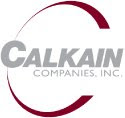
Though corporate sale-leasebacks came to a halt in Europe during the first quarter of this year, it appears likely that they will soon emerge as a major force. Many firms are in dire need of financing, and with the channels of credit and debt dried up; many will soon be looking to their property as a reservoir of cash. Currently, sale-lease-backs have been halted due to a lack of debt financing and a large disparity in perceived value between buyers and sellers. However, the gap in perceived value is beginning to close and buyers are becoming more willing to buy with cash now, hoping they can raise debt later.
A sale-leaseback is a real estate transaction whereby the owner of a property sells it for cash and then leases it back from the buyer on a long term lease (usually over 20 years). They are performed in order to provide beleaguered firms with a much needed inflow of cash, without disrupting their operations.
For instance, say Wynand Industries owns a building worth $300 million, which they use to manufacture widgets. In need of cash, they decide to sell it to a buyer, Roark Enterprises. After the sale, Wynand Industries signs a lease with Roark, allowing Wynand to use the building for as long as the lease period. Thus, Wynand can continue manufacturing widgets while also receiving an inflow of cash.
In today’s economy, sale-leasebacks are an increasingly viable option for companies who need cash. The most prominent example of this would be the New York Times, who in March completed a sale leaseback on its Manhattan headquarters which had only been built two years prior. In this case, investment firm W.P. Carey paid $225 million for the space the New York Times occupied in the building (around 750,000 square feet), with the New York Times subsequently signing a 15 year lease. At the end of the 15 year period they have the option to buy back the building for $250 million. For the New York Times, a sale leaseback was one of the only options available to them. They were in dire need of cash to pay back debt and with stocks and bonds at such low levels, monetizing their assets provided the only solution.
Many companies today are facing similar situations. This is because other cash raising vehicles such as the issuance of stocks and bonds are presently unfeasible. In good times stocks and bonds could be issued with the assurance of receiving the necessary cash in return. However, today the reduced price of stocks means investors would require hefty discounts on any stock issued, while bonds are currently being shied away from unless they are from the highest investment-grade issuers. For companies who need to raise cash in order to pay back debt or continue operating, this makes those options virtually impossible. If you are at the point of needing cash to pay back debts or continue operating, the discount on your stock would be large enough to nullify the benefits of issuance and no investor would think of buying your new debt. This leaves many companies looking at their property as a source of financing.
Though the sale-leaseback market is not without its problems, they are not so disruptive as to prohibit investment. There are many interested buyers and sellers; the issue is primarily one of financing. However, buyers are becoming more willing to invest cash today, for an investment which they could not normally acquire, and find debt later. There is also the risk of default. The sale leaseback is essentially a long term relationship between two companies; a default at either end would cause serious harm. However, the risk of default can be easily mitigated with proper underwriting and due diligence. Sale leasebacks provide an excellent way for companies to convert their assets into cash, but analysis of the respective parties is required to ensure a viable transaction.
Currently, the restrictive tides of today’s market have stemmed the flow of sale-leasebacks. There is a lack of buyers due to price disparity and the availability of cash or debt. These ailments run throughout the real estate market today, leaving property investment as a whole at a stand still. However, it is likely that momentum will return to the market sooner rather than later, especially within the sale leaseback realm. The demand for cash and lack of debt is forcing many companies to consider monetizing their property. With much of this property in prime location, it is reasonable to assume that eventually buyers will be found.





No comments:
Post a Comment